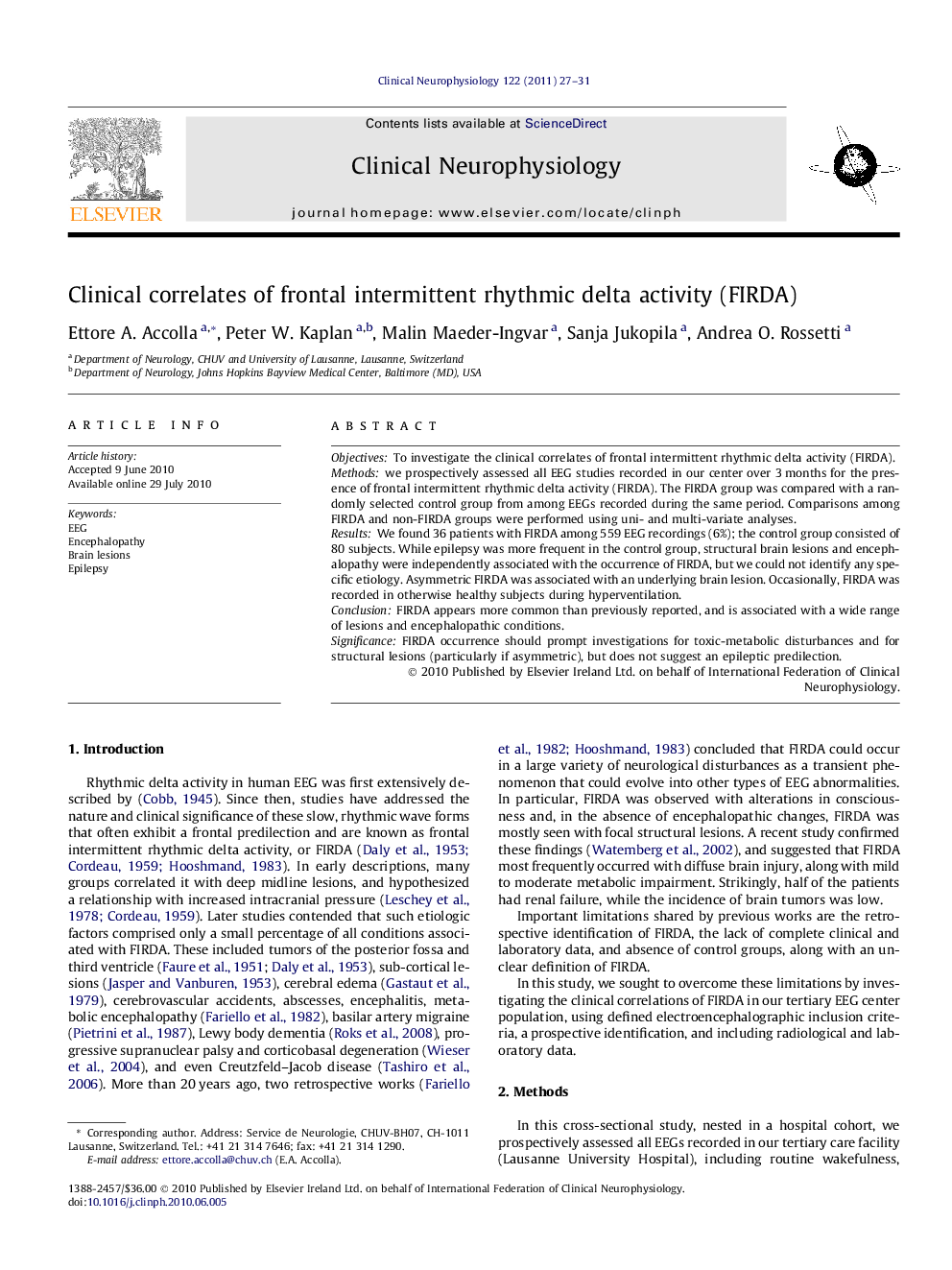| Article ID | Journal | Published Year | Pages | File Type |
|---|---|---|---|---|
| 3044241 | Clinical Neurophysiology | 2011 | 5 Pages |
ObjectivesTo investigate the clinical correlates of frontal intermittent rhythmic delta activity (FIRDA).Methodswe prospectively assessed all EEG studies recorded in our center over 3 months for the presence of frontal intermittent rhythmic delta activity (FIRDA). The FIRDA group was compared with a randomly selected control group from among EEGs recorded during the same period. Comparisons among FIRDA and non-FIRDA groups were performed using uni- and multi-variate analyses.ResultsWe found 36 patients with FIRDA among 559 EEG recordings (6%); the control group consisted of 80 subjects. While epilepsy was more frequent in the control group, structural brain lesions and encephalopathy were independently associated with the occurrence of FIRDA, but we could not identify any specific etiology. Asymmetric FIRDA was associated with an underlying brain lesion. Occasionally, FIRDA was recorded in otherwise healthy subjects during hyperventilation.ConclusionFIRDA appears more common than previously reported, and is associated with a wide range of lesions and encephalopathic conditions.SignificanceFIRDA occurrence should prompt investigations for toxic-metabolic disturbances and for structural lesions (particularly if asymmetric), but does not suggest an epileptic predilection.
